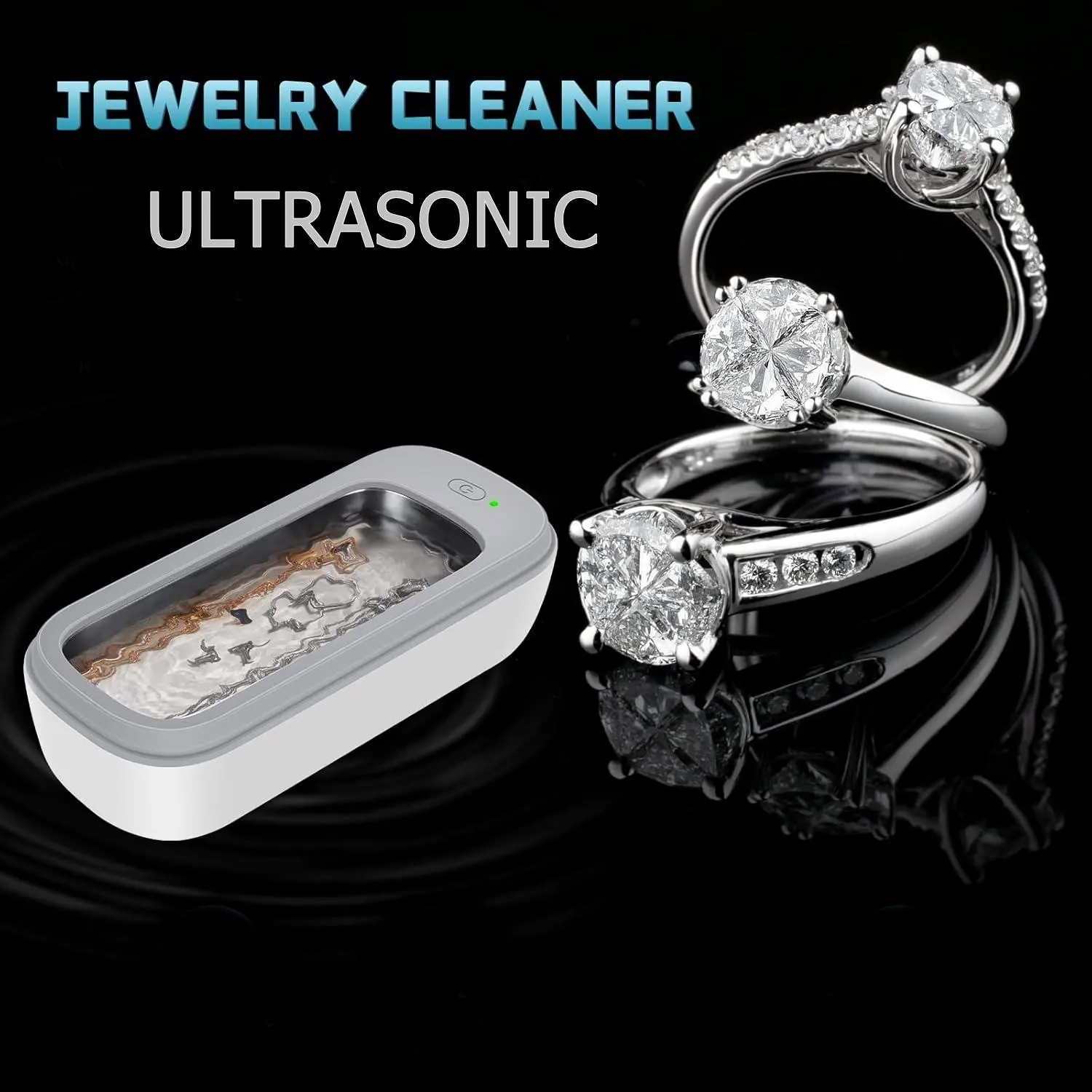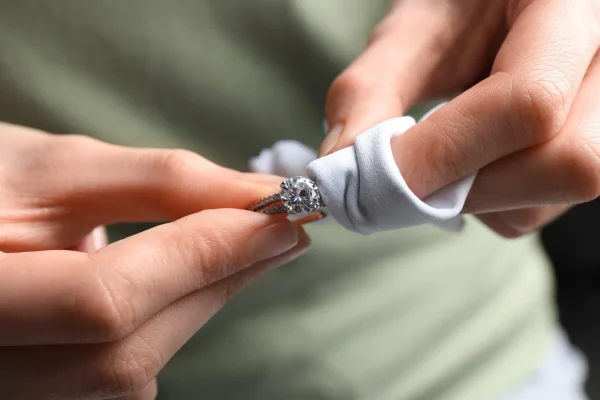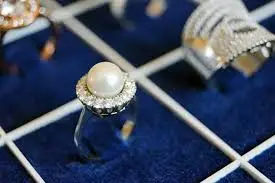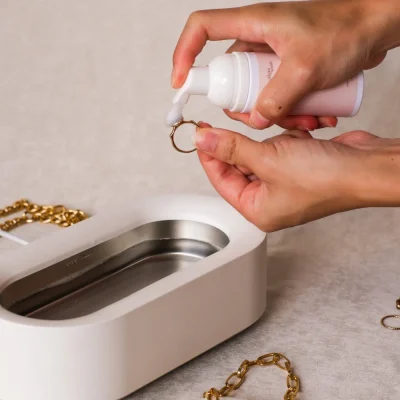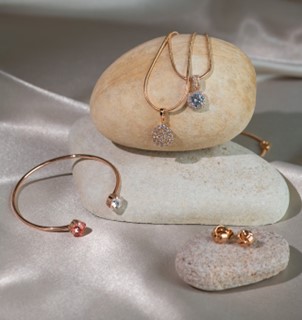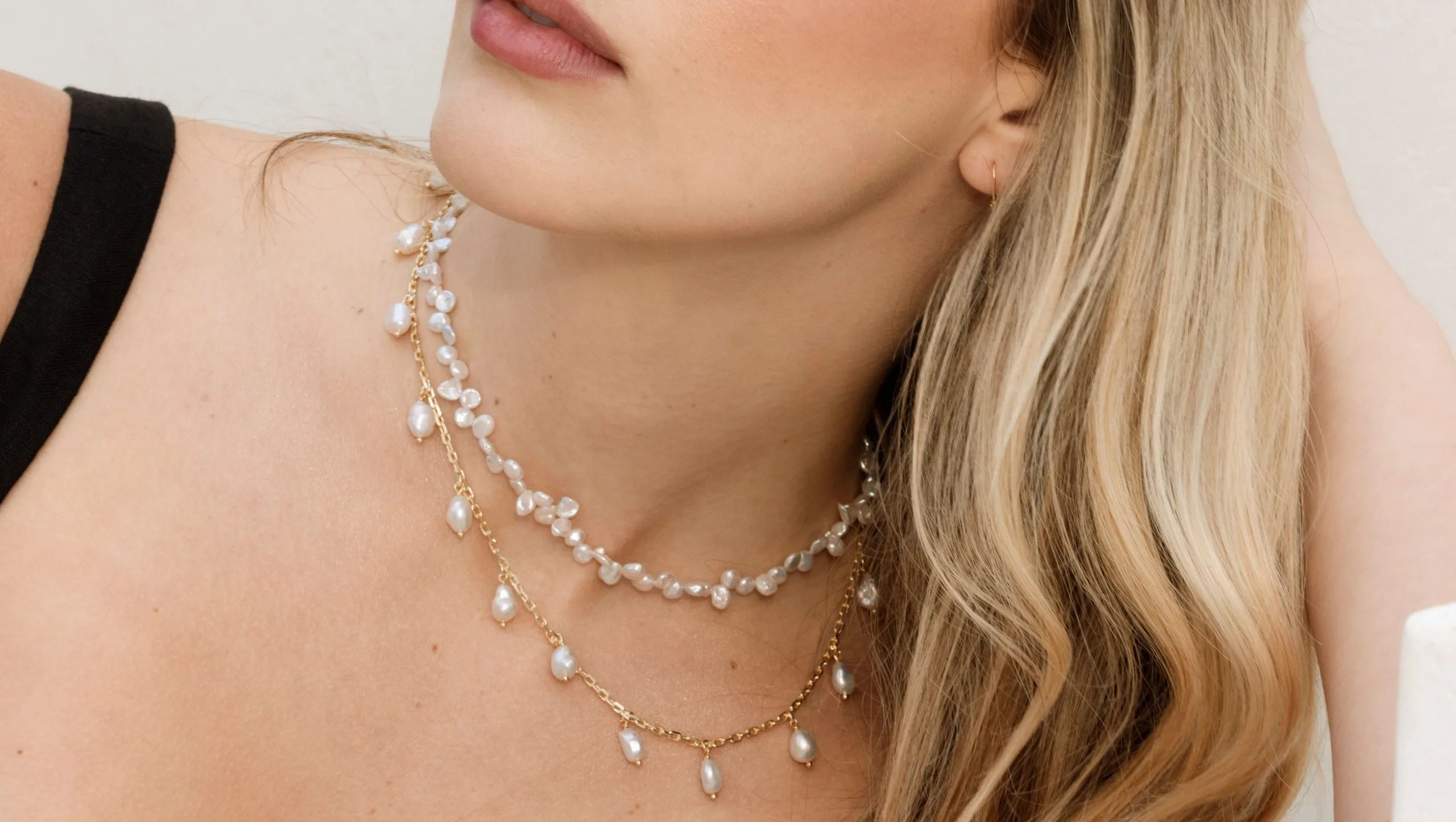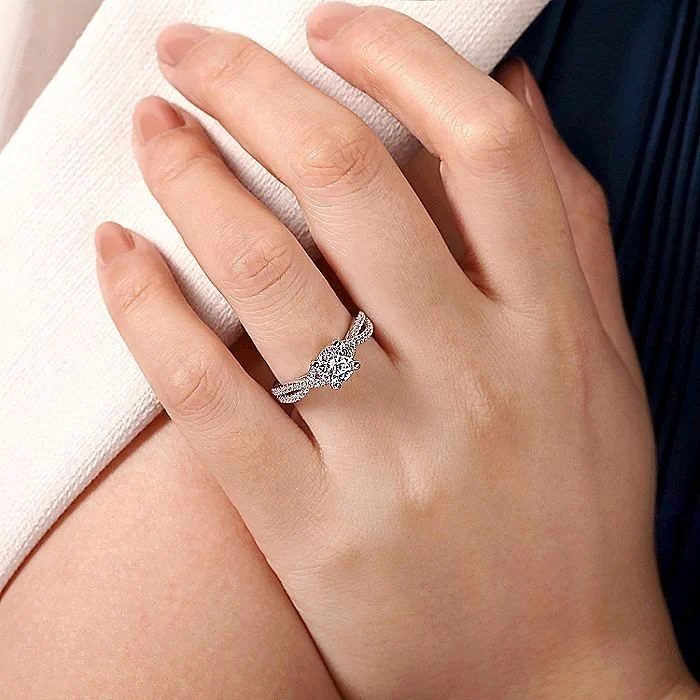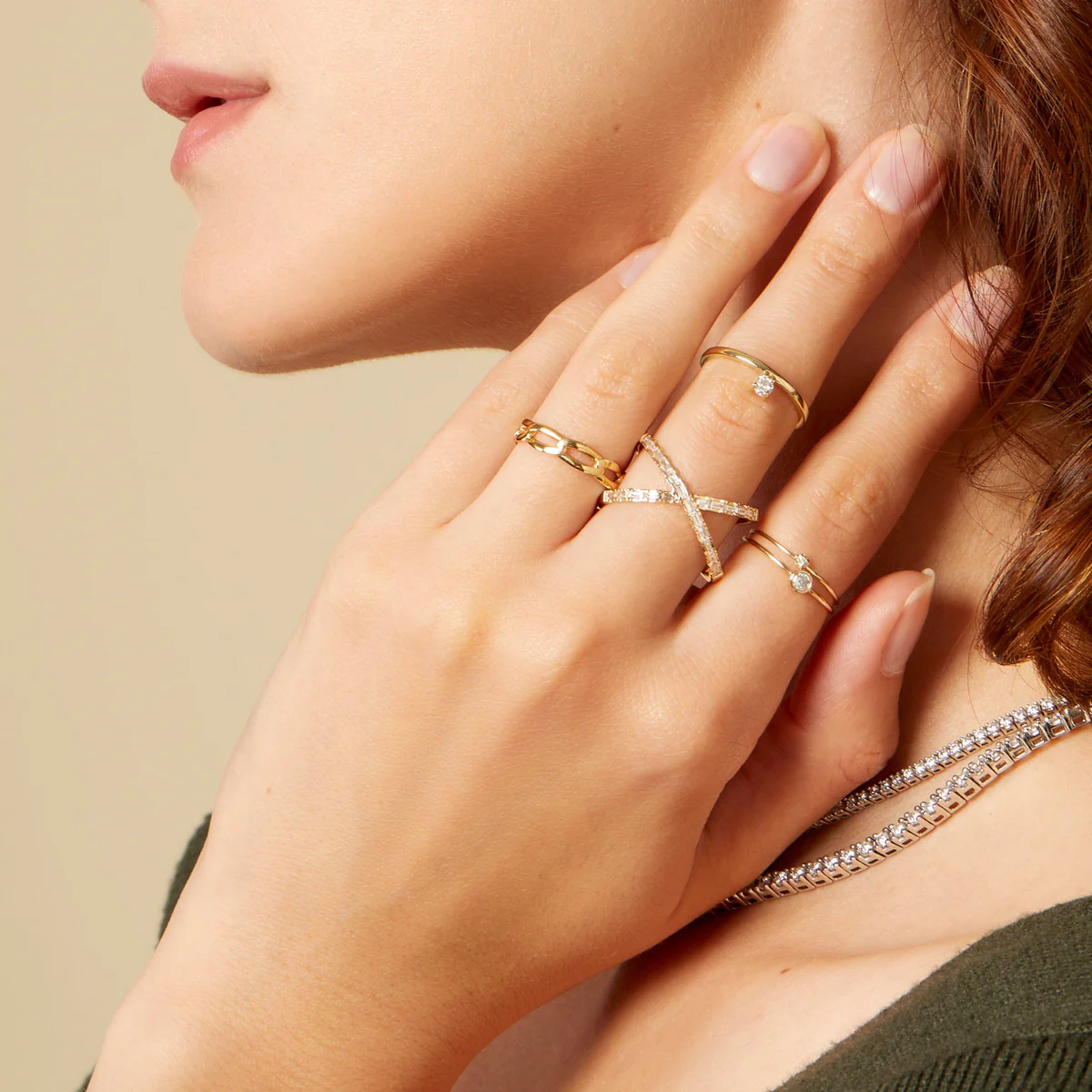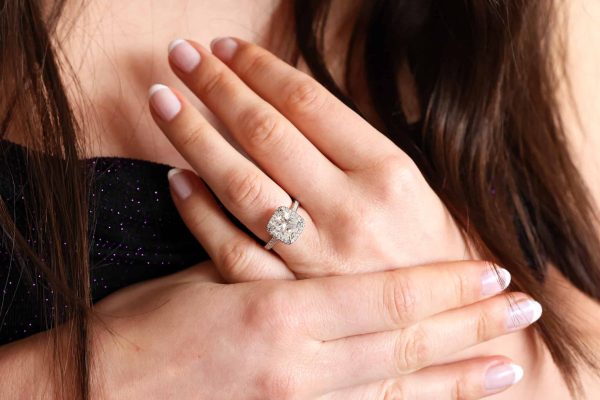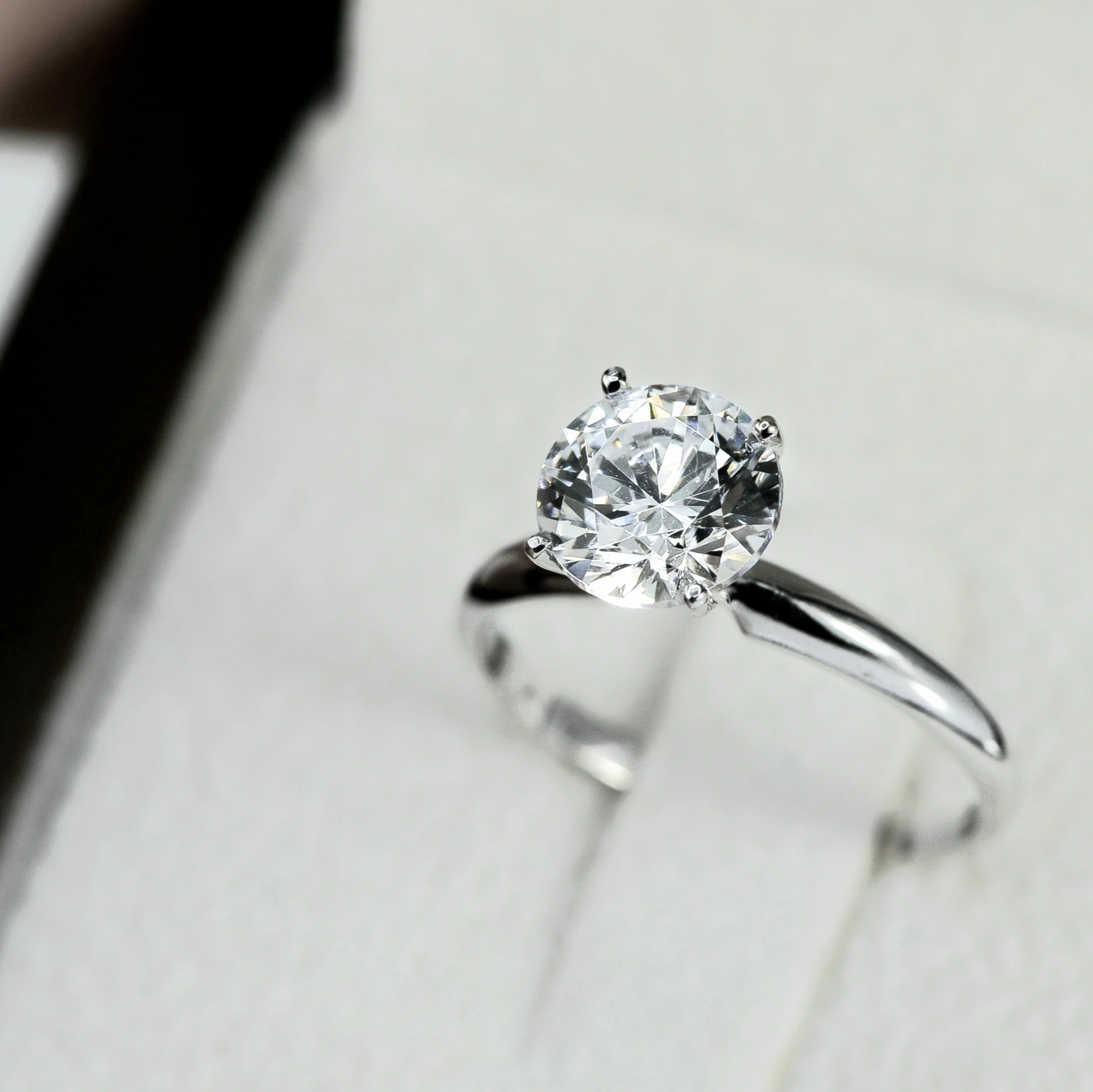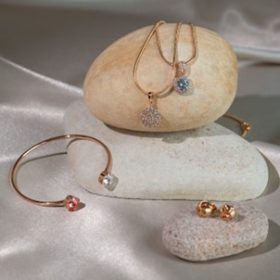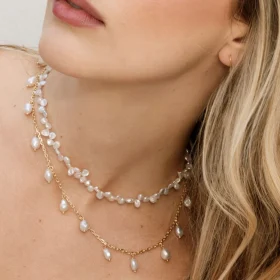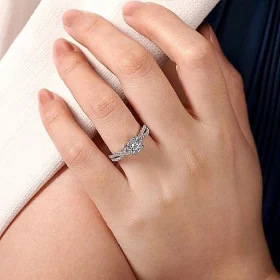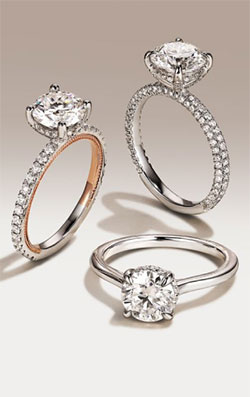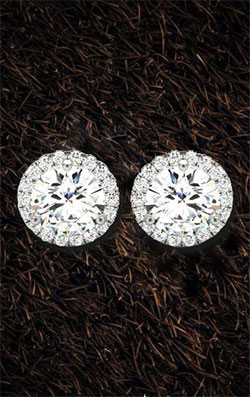Purchasing a stunning piece of jewelry or receiving it as a gift is one part of the story.
The other?
Retaining its original condition for as long as possible.
If you need help figuring out how, let us introduce you to an innovative technique: ultrasonic cleaning.
It is used to clean a wide range of items, including jewelry. Once used in specialized industries, such as automotive and medical, ultrasonic cleaners are now available for the general public.
In today’s blog, we’ll explain how to use ultrasonic cleaners to clean your jewelry of dirt, grime, and other accumulated debris.
We recommend reading these tips carefully because it is of the utmost importance to know how to utilize the device effectively and which jewelry you SHOULD NOT clean with it.
What Is an Ultrasonic Jewelry Cleaner?
An ultrasonic cleaner is a device that uses high-frequency waves to clean items. Featuring a tank filled with a cleaning solution (water mixed with a mild detergent), the device generates sound waves that create microscopic bubbles in the liquid.
The bubbles, in return, produce a process called cavitation.
Cavitation refers to the formation and collapse of bubbles, which create tiny shock waves that remove contaminants from the items being cleaned.
A major reason for using ultrasonic cleaners is that they clean the items gently yet thoroughly. These qualities are widely appreciated by those who want to clean delicate accessories without damaging the intricate design.
How to Clean Jewelry in an Ultrasonic Cleaner
Now that you have the basic idea of the working of an ultrasonic cleaner, let’s learn how to use it:
- Gather Your Supplies
Apart from the device, you’ll need a cleaning solution (specific to the device), a soft cloth, and the jewelry that requires cleaning.
- Prepare the Ultrasonic Cleaner
Fill the cleaner’s tank with water up to the recommended level and add the required amount of cleaning solutions.
- Inspect Your Jewelry
Before you put your jewelry in for cleaning, inspect it for loose stones or other damage. If the jewelry already has issues, cleaning it with the device can exacerbate those issues.
- Put the Jewelry in the Basket
Place the jewelry in the cleaner’s basket. If you are cleaning more than one piece of jewelry at once, make sure they don’t touch each other to avoid scratching.
- Set the Cleaning Cycle
Set the cleaning cycle based on the jewelry type and the cleaner’s instructions.
- Start the Cleaning Process
After placing the jewelry, turn on the ultrasonic cleaner. It should take a few minutes.
- Rinse the Jewelry
After the device cleans the jewelry, take it out of the basket and pat it with a dry cloth. Inspect the jewelry closely for any damage or scratches.
Tips for Producing the Best Results with an Ultrasonic Cleaner
Sometimes, even if you follow the instructions properly, you’ll notice the jewelry has not been cleaned. In that case, you must follow these tips for optimal results:
- Pay close attention to the manufacturer’s instructions for cleaning and the solution.
- Do not put porous stones, such as opal or pearls, in an ultrasonic cleaner.
- Keep the device clean and maintained to ensure it cleans the jewelry properly.
- Avoid using harsh chemicals; only use solutions developed specifically for the purpose.
- Do not put multiple pieces at once. Leave the space for the waves to reach every corner.
Gemstones Safe for Ultrasonic Cleaning
It’s safe to clean jewelry embedded with the following stones with an ultrasonic cleaner:
- Diamonds (except those treated by fracture filling or coating)
- Rubies (except those treated with glass filling)
- Sapphires (except those treated with glass filling)
- Amethysts
- Citrine
- Quartz
- Topaz
- Spinel
- Aquamarine
- Garnet
Gemstones Unsafe for Ultrasonic Cleaning
The following gemstones are too soft and porous, making them unsafe for an ultrasonic cleaner:
- Emeralds (often treated with oils or resins)
- Opals (soft and porous)
- Pearls (soft and organic)
- Turquoise (porous)
- Lapis Lazuli (porous)
- Malachite (porous and soft)
- Amber (soft and organic)
- Tanzanite (soft)
- Peridot (can be brittle)
- Coral (organic and porous)
- Onyx (porous)
- Moonstone (soft)
- Zircon (can be brittle)
- Morganite (can be brittle)
In addition to these gemstones, antique or vintage jewelry shouldn’t be cleaned with an ultrasonic cleaner.
Benefits of Using an Ultrasonic Jewelry Cleaner
- Thorough Cleaning: Ultrasonic cleaners can clean intricate settings that are otherwise hard to reach, resulting in thorough cleaning.
- Fast Results: The devices clean jewelry quickly, often within minutes. This is faster than cleaning the pieces manually.
- Gentle Cleaning: Despite an ultrasonic cleaner’s powerful waves, they do not damage the jewelry being cleaned.
- Versatile Device: An ultrasonic cleaner can be used for other items, such as watches and dental instruments, in addition to jewelry.
- Minimum Work: Using an ultrasonic cleaner requires minimum input from the user. The machine does all the work.
- Eco-Friendly: Ultrasonic cleaners use water-based solutions; they are more environmentally friendly than harsh chemicals.
- Cost-Effective: While purchasing an ultrasonic means paying an upfront cost, it eliminates the need to visit a jeweler afterward.
Ultrasonic Cleaner – A Buying Guide
If you do not have an ultrasonic cleaner and need help purchasing one, we’re here for you. Let’s discuss a few basic things you must be aware of:
- Size and Capacity: Consider the jewelry you’ll be cleaning and then purchase a machine with the size and capacity to accommodate it.
- Power and Frequency: The cleaning frequency of an ultrasonic cleaner varies, typically between 20 and 500 kHz. Choose the frequency that best suits your needs.
- Ease of Use: If this is your first time using an ultrasonic cleaner, choose one that is easy to use.
- Noise Level: Ultrasonic cleaners generate a lot of noise. If that concerns you, buy one with a noise-reduction feature.
- Material and Construction: Since you’ll use the machine frequently, pay attention to its material and construction. We recommend purchasing an ultrasonic cleaner with a stainless steel tank for its corrosion resistance.
Before You Leave
An ultrasonic cleaner is a game-changing device that has revolutionized how people clean their jewelry. It is easy to use, thoroughly cleans jewelry, and helps you save money in the long run. What’s not to like?
Remember the tips we’ve shared with you today, and you’ll be good to go. If you need further assistance, feel free to contact Fine Jewelry and Gemstones.
Besides selling stunning jewelry, we specialize in helping our clients properly care for the pieces.
Frequently Asked Questions
Yes, ultrasonic cleaners are generally safe for diamonds due to their hardness. They effectively remove dirt and grime from diamonds. However, avoid using ultrasonic cleaners for diamonds that have been treated with fracture filling or coatings, as the cleaning process can affect these treatments.
Yes, ultrasonic jewelry cleaners work by creating high-frequency sound waves that generate microscopic bubbles in a cleaning solution. These bubbles implode, creating a scrubbing action that effectively cleans intricate surfaces and hard-to-reach jewelry areas.
Typically, ultrasonic jewelry cleaners use water mixed with a specialized cleaning solution formulated with ultrasonic cleaners. These solutions are designed to enhance the cleaning process and protect the jewelry and the ultrasonic cleaner.
The frequency of use depends on how often your jewelry needs cleaning. Using an ultrasonic cleaner every few weeks or as needed is sufficient for regular maintenance. Avoid excessive use, as it may wear down delicate settings over time.
Avoid using ultrasonic cleaners on jewelry with soft or porous stones, such as pearls, opals, emeralds, turquoise, and certain treated gemstones. The cleaning process can damage or affect these stones.





